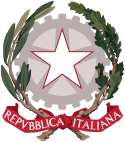The 2010 Italian local elections were held on different dates; most on 29–30 March (second round on 11–12 April) oncurrently with the Regional elections.
In Trentino-Alto Adige/Südtirol the elections were held on 15–16 May with a second ballot on 30–31 May; all of 321 comuni of the region voted for a new mayor and a new City Council.

Trentino-Alto Adige/Südtirol is an autonomous region in Northern Italy. Since the 1970s, most legislative and administrative powers have been transferred to the two self-governing provinces that make up the region: the Province of Trento, commonly known as Trentino, and the Province of Bolzano, commonly known as South Tyrol.
In Aosta Valley the elections were held on 23–24 May in the city of Aosta.
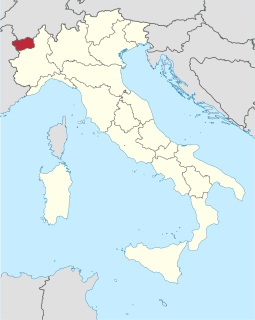
The Aosta Valley is a mountainous autonomous region in northwestern Italy. It is bordered by Auvergne-Rhône-Alpes, France, to the west, Valais, Switzerland, to the north and by the Metropolitan City of Turin in the region of Piedmont, Italy, to the south and east.
On May 30–31 the elections were held in Sicily and Sardinia.

Sicily is the largest island in the Mediterranean Sea and one of the 20 regions of Italy. It is one of the five Italian autonomous regions, in Southern Italy along with surrounding minor islands, officially referred to as Regione Siciliana.

Sardinia is the second-largest island in the Mediterranean Sea. It is located west of the Italian Peninsula and to the immediate south of the French island of Corsica.
In Italy, direct elections were held in comuni and provinces: in each comune were chosen mayor and members of the City Council, in each province were chosen president and members of the Provincial Council.

Italy, officially the Italian Republic, is a country in Southern Europe. Located in the middle of the Mediterranean Sea, Italy shares open land borders with France, Switzerland, Austria, Slovenia and the enclaved microstates San Marino and Vatican City. Italy covers an area of 301,340 km2 (116,350 sq mi) and has a largely temperate seasonal and Mediterranean climate. With around 61 million inhabitants, it is the fourth-most populous EU member state and the most populous country in Southern Europe.

The comune is a basic administrative division in Italy, roughly equivalent to a township or municipality.

In Italy, a province (provincia) is an administrative division of intermediate level between a municipality (comune) and a region (regione). From 2015, the provinces were reorganized into "institutional bodies of second level", with the birth of 10 special Metropolitan cities. A further 4 such cities were added later.
Citizens living in Italy who were 18 or over on election day were entitled to vote in the local council elections.

The Sardinian regional election of 1994 took place on 12 and 26 June 1994.
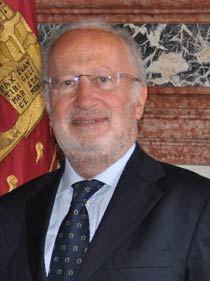
Giorgio Orsoni is an Italian lawyer, politician and a former mayor of Venice.

The 2011 Italian local elections were held on 15–16 May, with a second round on 29–30 May. In Italy, direct elections were held in all 1,177 comuni and 11 provinces: in each comune were chosen mayor and members of the City Council, in each province were chosen president and members of the Provincial Council. Of the 1,177 comuni, 30 were capoluoghi and only 105 had a population higher than 15,000 inhabitants.
Municipal elections were held in Rome on 28–29 May 2006, at the same time as other Italian municipal elections. The outgoing Mayor of Rome, Walter Veltroni (DS) faced center-right candidate Gianni Alemanno who was chosen to head his coalition.
Municipal elections were held in Rome on 13 and 27 May 2001, at the same time as Italian general elections. The outgoing Mayor of Rome, Francesco Rutelli (Greens), was candidate in the general elections, so he resigned in January. The center-right candidate Antonio Tajani, was faced by the center-left candidate Walter Veltroni who was chosen to head his coalition.
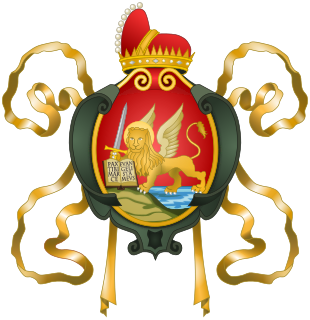
The Mayor of Venice is an elected politician who, along with the Venice’s City Council of 36 members, is accountable for the strategic government of Venice in northern Italy.

Municipal elections were held in Rome on 21 November 1993 with a second round on 5 December. The center-left candidate Francesco Rutelli (Greens) faced the neo-fascist candidate Gianfranco Fini.

The 2012 Italian local elections were held on 6–7 May, with a second round on 20–21 May. In Italy, direct elections were held in 948 comuni: in each comune were chosen mayor and members of the City Council. Of the 948 comuni, 28 were capoluoghi and only 176 had a population higher than 15,000 inhabitants.

The 2013 Italian local elections were held on different dates; most on 25–26 May, with a second round on 8–9 June. In Italy, direct elections were held in 720 comuni: in each comune were chosen mayor and members of the City Council. Of the 720 comuni, 20 were capoluoghi and only 171 had a population higher than 15,000 inhabitants.

The 2014 Italian local elections were held on 25 May, with a second round on 8 June. In Italy, direct elections were held in 4086 comuni: in each comune were chosen mayor and members of the City Council. Of the 4086 comuni, 29 were capoluoghi and 243 had a population higher than 15,000 inhabitants.

The 2015 Italian local elections were to be held on 31 May, with a second round on 14 June, concurrently with the Regional elections. In Italy, direct elections were held in 1063 comuni: in each comune were chosen mayor and members of the City Council. Of the 1603 comuni, 15 were capoluoghi and 120 had a population higher than 15,000 inhabitants.

Municipal elections will be held in Bologna on 5 and 19 May 2016. The centre-left candidate Virginio Merola was elected mayor at the second round with 54.64% of votes.
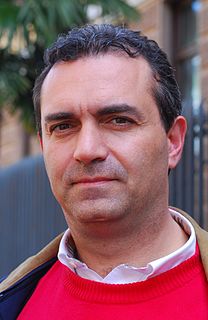
Municipal elections were held in Naples on 5 June 2016.

Municipal elections were held in Turin, northern Italy, in May 2016. Chiara Appendino, the candidate of the Five Star Movement, was elected after defeating former mayor Piero Fassino in the runoff.

The 2016 Italian local elections were held on 5 June, with a run-off, where necessary if a candidate for Mayor obtained less than 50 percent of votes in the first round, held on 19 June.

The 2017 Italian local elections were held on Sunday 11 June. If necessary, a run-off vote was held on Sunday 25 June. The term of mayors and councils will last five years, unless an early election is triggered.

The 2018 Italian local elections were held on different dates; most on 10 June, with a second round on 24 June. In Italy, direct elections were held in 720 comuni: in each comune were chosen mayor and members of the City Council. Of the 783 comuni, 21 were capoluoghi and only 112 had a population higher than 15,000 inhabitants.

The 2019 Italian local elections will be held on 26 May 2019, together with the 2019 European election, with a second round on 9 June. Direct elections will be held in 3843 comuni: in each comune mayor and members of the City Council are going to be chosen. Of the 3841 comuni, 30 are capoluoghi.
